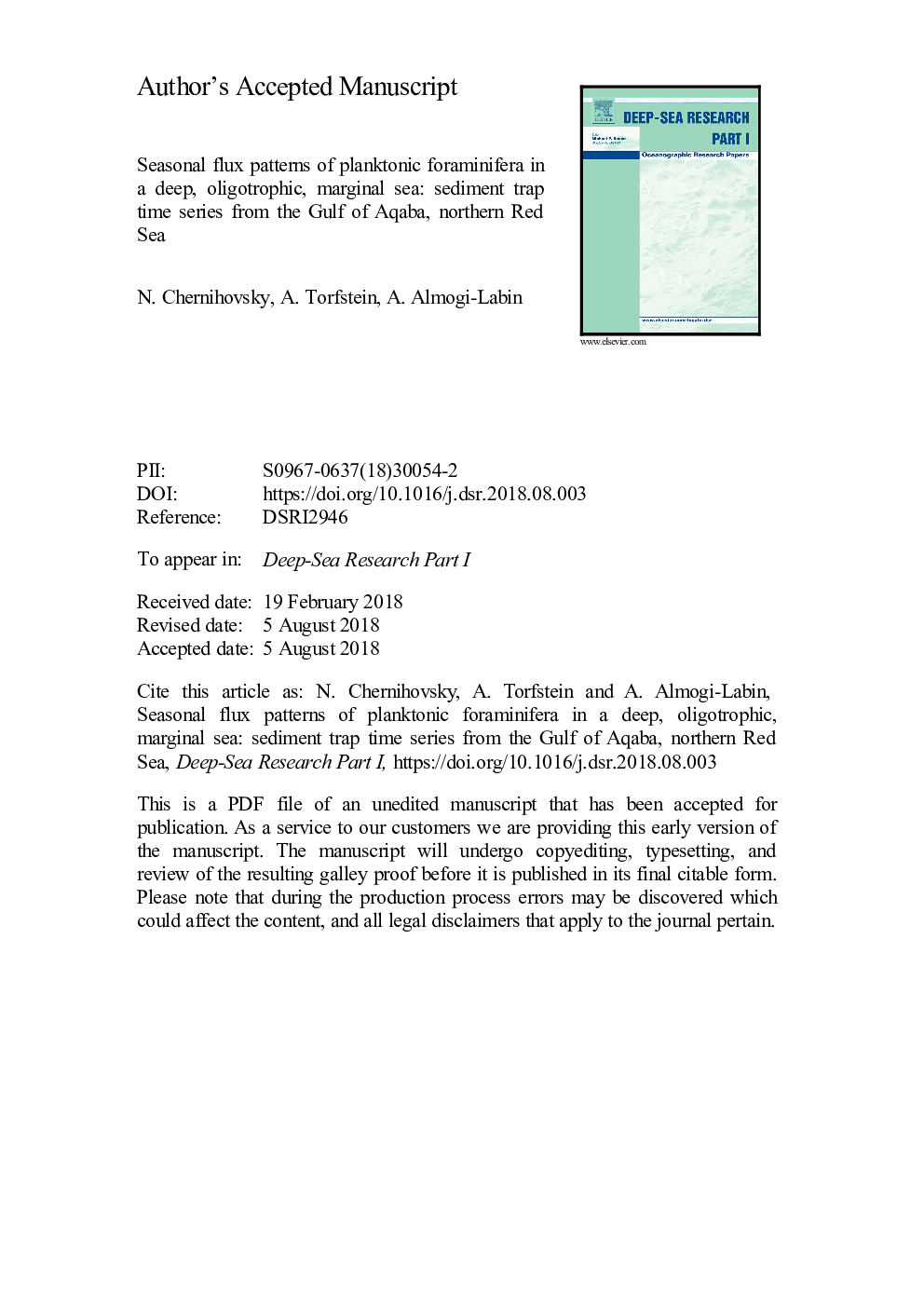| Article ID | Journal | Published Year | Pages | File Type |
|---|---|---|---|---|
| 11008174 | Deep Sea Research Part I: Oceanographic Research Papers | 2018 | 50 Pages |
Abstract
Over the last few decades, the already low number of PF species decreased in the GOA from 13 to 10, including the disappearance of Trilobatus sacculifer, the most common species in the GOA during the 1970s. This finding could reflect the sensitivity of the geographic location of the GOA, at the edge of a >â¯2000â¯km transect that begins in the productive Arabian Sea, and spans across the Red Sea, where a gradual decrease in nutrient availability and increase in surface salinity imposes a corresponding decrease in PF species richness, abundances and diversity. Thus, the northern GOA is an extreme case of an oligotrophic system whose ecosystem is already pre-screened by the Red Sea transect. Combined with previous episodes of Trilobatus sacculifer disappearance identified in downcore records in the Red Sea, we conclude that the change in the PF community over recent decades is probably not the result of local eutrophication processes, as has been suggested in recent studies, but rather, more likely reflects environmental changes on a larger regional to global scale.
Related Topics
Physical Sciences and Engineering
Earth and Planetary Sciences
Geology
Authors
N. Chernihovsky, A. Torfstein, A. Almogi-Labin,
